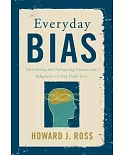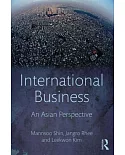Why write a dissertation using secondary sources only? A growing number of universities are making this a necessity, by means of controlling administration, so the decision could be made for you. But there are a number of reasons why collating from secondary sources might be preferable to creating your own.
We live in an age where media and the Internet make an abundant source of material that may be interrogated unobtrusively by researchers. Secondly, gathering empirical research is complex and challenging, and not a skill set that you’re likely to use in a future management career—unlike desk based research, of material already available to you.
While methodology textbooks mention secondary sources, the assumption is that the research is quantitative and statistical. No textbook has gone beyond this, until now. This much-needed book is a start-to-finish guide to every step of your project, from inspiring ideas to crafting conclusions, all from work already in the public domain, and in a conversational, humorous and even inspiring way.
Each chapter starts with a "Why Read This?" box to summarise how what you are about to learn will make your life easier and how it relates to other chapters. Each method or stage explained includes examples of real student projects, with student commentary on the highs and lows. Each chapter includes vignettes from published research articles, as well as "Now What" boxes and "Try It Out" exercises to help you think through every stage of your project.





















